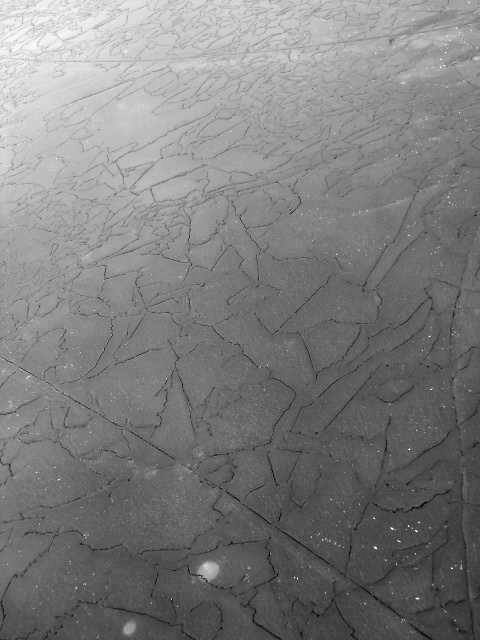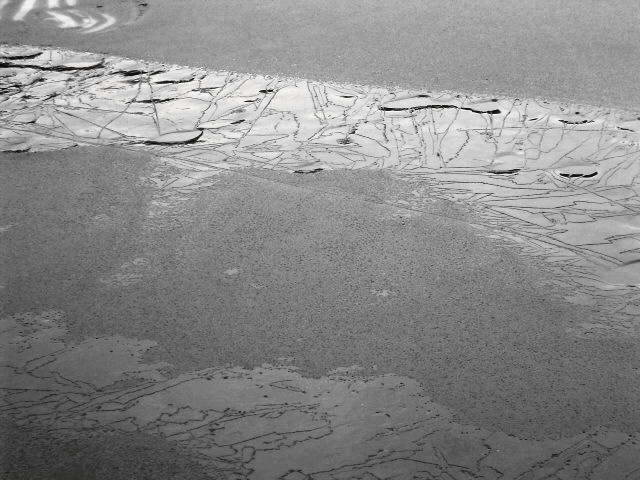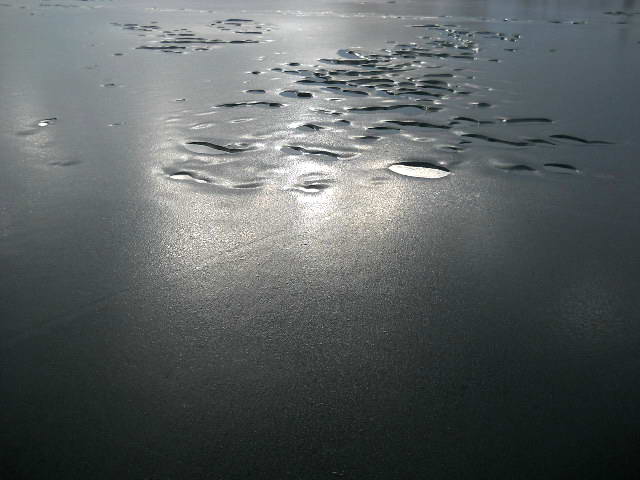Pictures of thawed ice from Karl van der Voort
Comments from Karl and Bob (editor) to illustrate how to identify different ice types and get a sense of how thawed the ice sheet is.

Large Grain ice (S1). The dimensions of the bigger grains is roughly a foot. The groves are the grain boundaries. They have pores that run through the ice sheet. They drain the melt water that forms in the grooves and on the surface. This ice appears to be in the 'weakening' stage (stage 4).
The convoluted grain boundaries preserves some of the flexural strength of the ice making large grain ice stronger than small grain ice with the same thickness and in the same state of thaw.
 A mixture of small and large grain ice. The small grains are roughly 1/4-1/2" dimension. What probably happened is holes formed in the small grain ice and they refroze in still, snowless conditions into large grain ice.
A mixture of small and large grain ice. The small grains are roughly 1/4-1/2" dimension. What probably happened is holes formed in the small grain ice and they refroze in still, snowless conditions into large grain ice.
Karl points out that the dull (matte) surface of the small grain ice (type S2) is characteristic of this type of ice in a thawed condition. The dull surface is most apparent when the grain size is less than half an inch or so and the ice is in a fairly advanced state of thaw when the boundary grooves on the surface are big.
Both S1 and S2 ice behave differently than cold ice when poked with a test pole. In the the weakening stage, S2 ice it come out in chunks when poked at an angle to the surface. S1 (large grain size) ice still comes out in thin chips except near the grain boundaries. On colder black ice, poking at an angle results in thinner, concoidal chips.
 Matte surface of small grain ice (type S2) with pocketed ice. The rough area may be from recently melted snow ice or from wind scalloping (or both).
Matte surface of small grain ice (type S2) with pocketed ice. The rough area may be from recently melted snow ice or from wind scalloping (or both).
Small grain ice.
November 2013
